Edible mushrooms: a complete guide
2 years ago · Updated 6 months ago
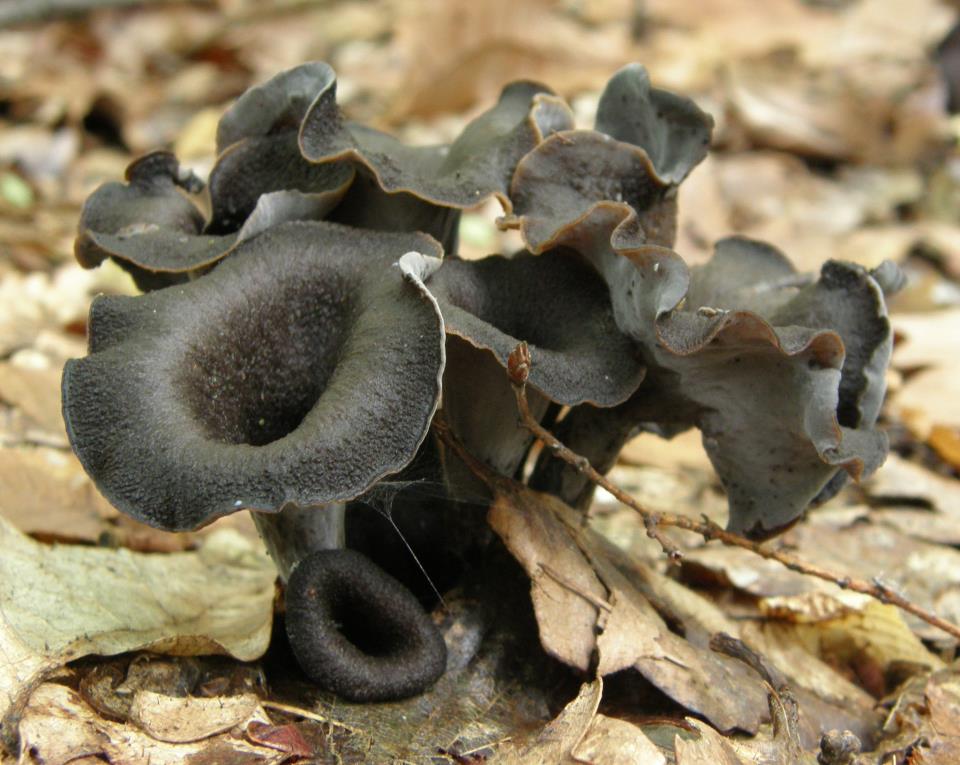
There are many edible mushrooms, but not all of them are known to mushroom pickers. We will tell you about the main ones, both wild and cultivated.
Boletes, milk caps, amanitas, and button mushrooms are just some of the species of mushrooms, truffles, and edible fungi that can be found in our forests. And in some cases, in abundance.
But not all mushroom lovers know them. Proof of this are the more than 400 cases of poisoning that occur from one mushroom season to the next, some of them fatal.
For this reason, we want to raise awareness of the most common edible mushroom species. This is to avoid any confusion with poisonous mushrooms and to ensure that all mountain lovers and mushroom hunters can enjoy themselves safely.
We have already discussed the best ways to search for and harvest mushrooms and how to behave in the mountains to ensure mushroom hunting is safe.
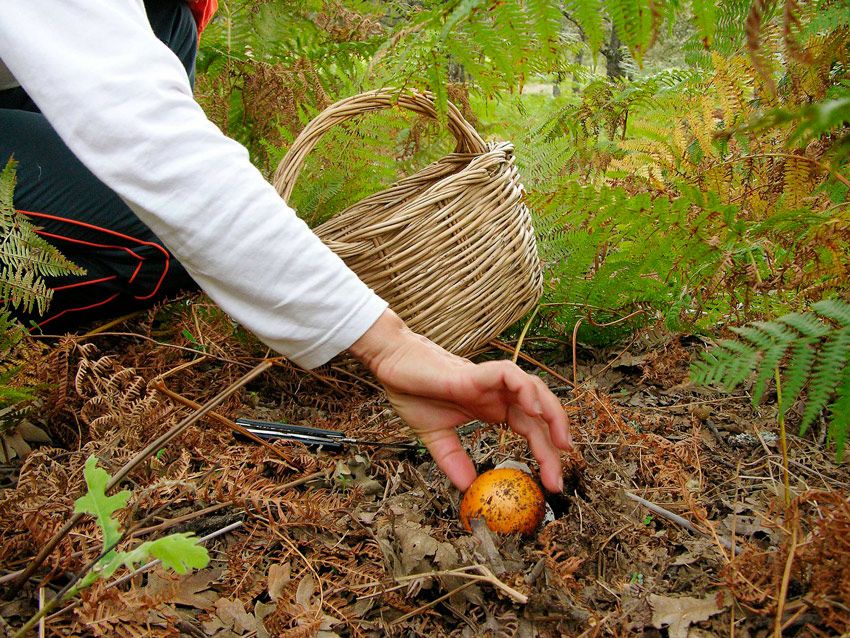
Edible mushrooms, types, and varieties
We offer you the edible mushroom species that we consider to be the most abundant and sought-after on the Iberian Peninsula. They are all a real delicacy. Each one has its own characteristics and unique flavor.
It should be noted that the consumption of edible mushrooms is increasing every year, and that all the species of mushrooms and mushrooms that we offer can be found in fish markets and markets
Some of them, such as morels or porcini mushrooms, at very high prices. If you would like to try any of the edible mushrooms and fungi mentioned in this article, you can purchase them in our gourmet mushrooms and truffles section.
Main edible wild mushrooms
- Mushroom
- Boletus
- Oronge
- Oyster mushrooms
- Chanterelle mushrooms
- Angula de campo mushrooms
- Morel mushrooms
- Girolle mushrooms
- Cow tongue
- Delicious milk cap
- Parasol mushroom
- Yellowing chanterelle
- Trompeta de los muertos
- Llanega
- Pied-bleu
- Clitocybe nebularis
- Oreille de Judas
- Hypholoma capnoides
Main edible cultivated mushrooms
- Portobello
- Mushroom
- Oyster mushroom
- Cultivated oyster mushroom
- Poplar oyster mushroom
- Shiitake
- Enoki
- Shimeji
Champignon de couche (Agaricus campestris)
There are many varieties of wild mushrooms, but perhaps the most common is Agaricus campestris. Due to its abundance and delicious flavor, it is one of the best known and most collected mushrooms in the Iberian Peninsula.
It can be distinguished by its cap, which is white in color and turns pink and gray when mature. It varies in size from 4 to 13 cm, although it is quite common to find specimens that are much larger.
It likes meadows and pastures. The taste of this wild mushroom is very pleasant, as is its aroma. We should discard mature specimens with black gills. We can find it almost all year round, from spring to winter, as it is very reliable in appearing after periods of rain.
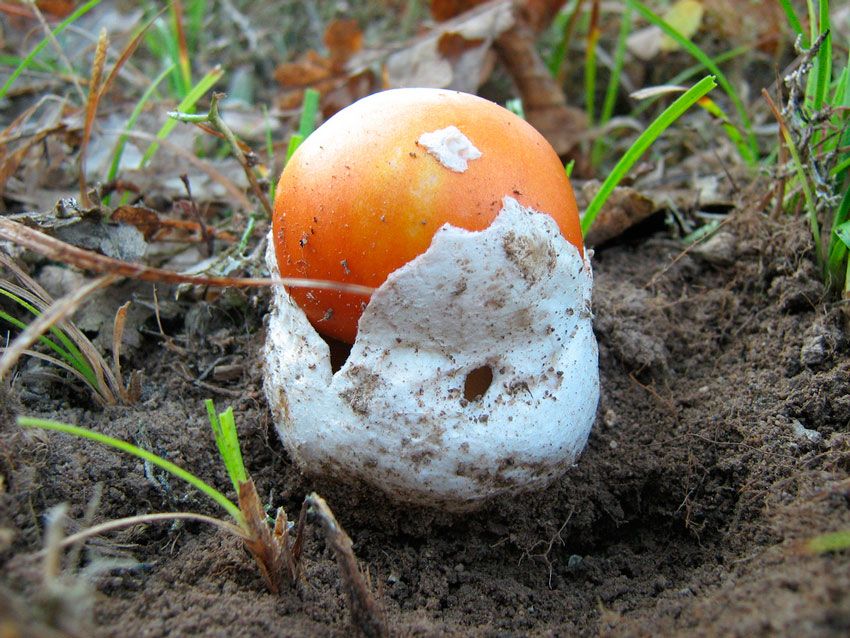
King's egg, Amanita caesarea, Oronge
It is considered by many enthusiasts to be the queen of mushrooms. Both for its beauty and its exquisite, delicate taste. Young specimens are egg-shaped and mature specimens can develop a large cap, between 7 and 24 cm.
The intense orange color is typical of this species. Its gills and stem are yellow, making it unmistakable. It appears from late spring and summer, after periods of heavy rain, until early fall. It is a mushroom that likes warm weather. Look for it in chestnut, cork oak, holm oak, and oak forests.
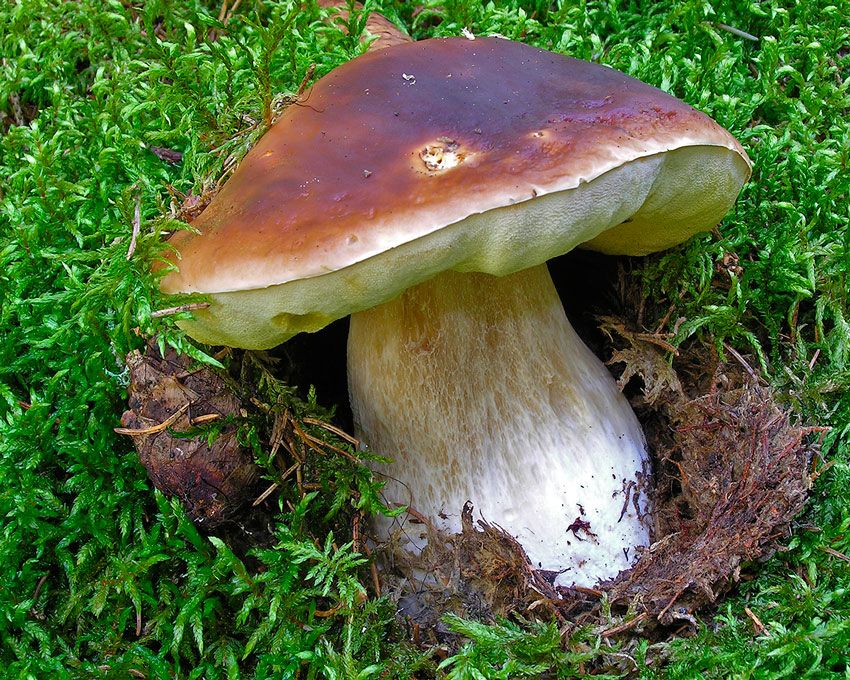
Boletus, B. edulis, pumpkin mushroom, leek
It is considered the most delicious edible bolete mushroom and is highly sought after by enthusiasts and chefs. It is also known as pumpkin, mushroom, or leek.
Its characteristic sweet and nutty flavor, as well as its consistency and texture, are the keys to its success. The color varies from whitish tones when undeveloped to fawn brown tones in its adult stage.
Its cuticle is slimy when young and loses this characteristic with age. It can be found from late summer to late fall, although it is not uncommon to find a few specimens in late spring if the weather is mild. It grows mainly under conifers and deciduous trees, always on acidic soils.
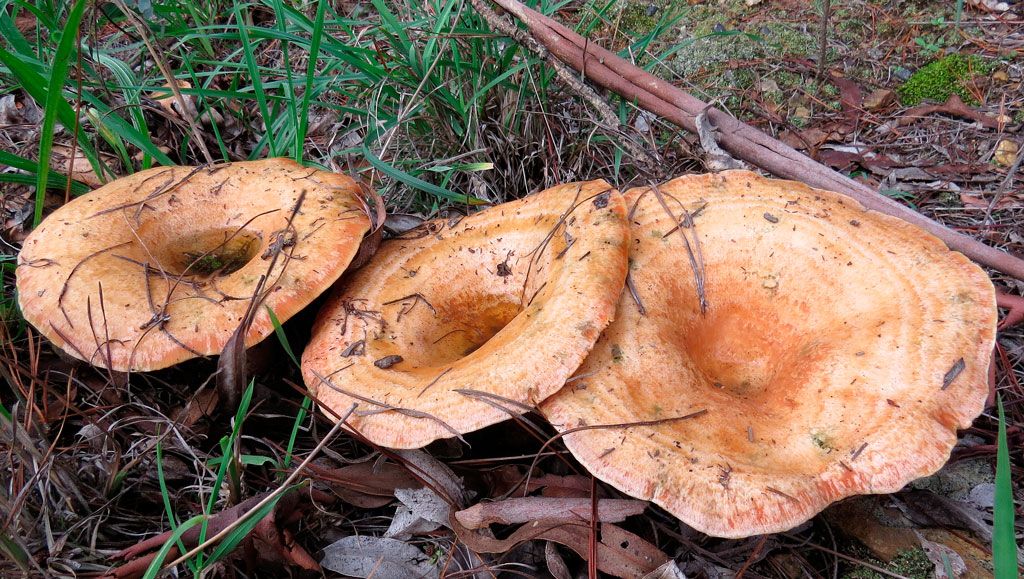
Chanterelle (Lactarius Deliciosus)
The robellón, rovelló or níscalo is probably the most sought-after mushroom on the Iberian Peninsula. Not so much for its flavor as for its abundance when in season. Its characteristic zoned, fleshy and brittle cap can reach more than 16 cm in mature specimens. Its orange color turns green on contact, as do its gills, which are very close together and the same shade. It can be found in young pine forests from late summer to early winter, depending on the geographical area.
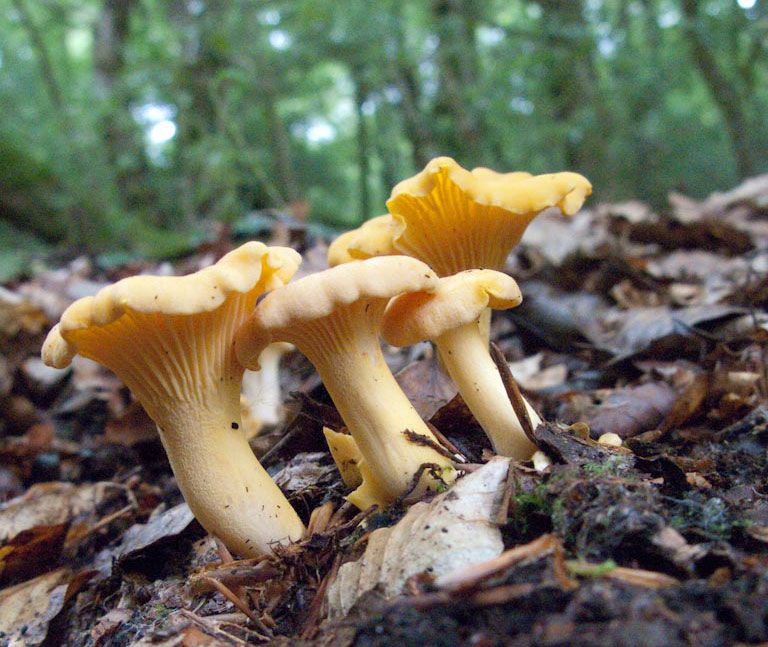
Girolle (Cantharellus cibarius)
This beautiful yellow mushroom is very common in our forests and therefore highly prized by mushroom pickers and cooks. This edible mushroom is very easy to identify. Its yellow color and funnel or trumpet shape are very recognizable. In addition, its gills form decurrent folds that run down the stem. The cuticle can be separated very easily from the cap. From a culinary point of view, it is considered excellent. Its fruity flavor with hints of apricot and its fleshy texture make it highly sought after. The chanterelle can be found almost all year round, but mainly in autumn under conifers, oaks, and beeches.
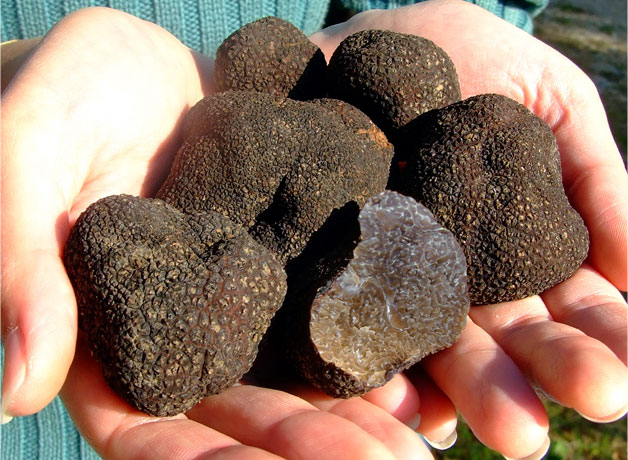
Black Truffle (Tuber Melanosporum)
The black truffle is a hypogeous fungus that grows underground. This truffle is very dark brown, almost black in color, with a warty surface, and is by far the most prized mushroom in cooking, fetching truly exorbitant prices of over €2,000 per kilogram. To harvest it, we need the help of a truffle dog, trained to locate the mushrooms by their aroma, even under ice. We can find black truffles, tuber melanosporum, in limestone soils, mainly associated with the roots of hazel, oak, and holm oak trees. From December to March. Spain is the world's leading producer of this edible mushroom, which needs periods of rain in summer to develop.
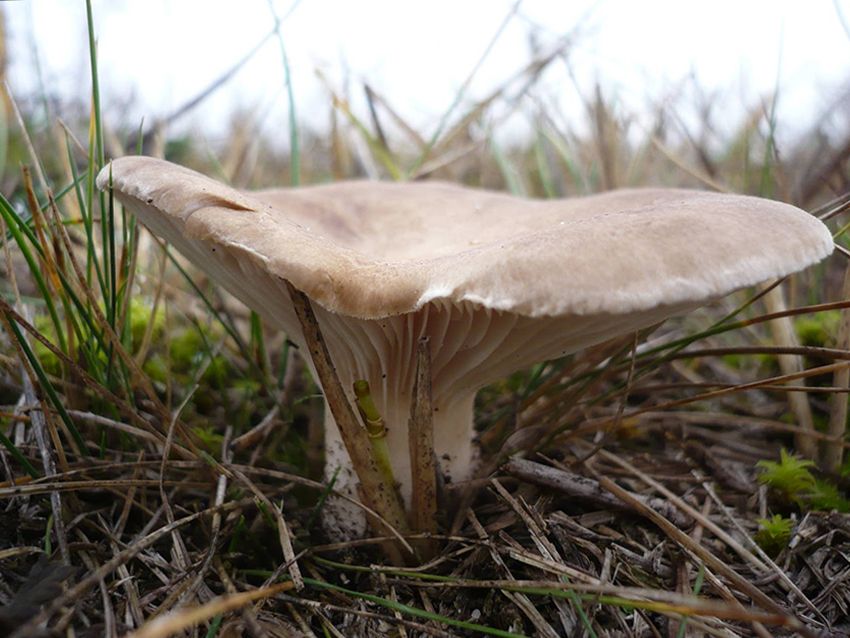
Pleurotus eryngii
This is a prairie mushroom that grows associated with the root of the horned thistle. It is one of the most widely consumed and traditionally sought-after mushrooms. It is very easy to distinguish due to its habitat and its characteristic caps and gills.
The cap has a rolled edge and a convex shape. It usually does not exceed 8 to 10 cm in diameter, and the color of the mushrooms varies from cream to dark brown. Its mild aroma, compact texture, and sweet flavor make this mushroom one of the most popular among chefs.
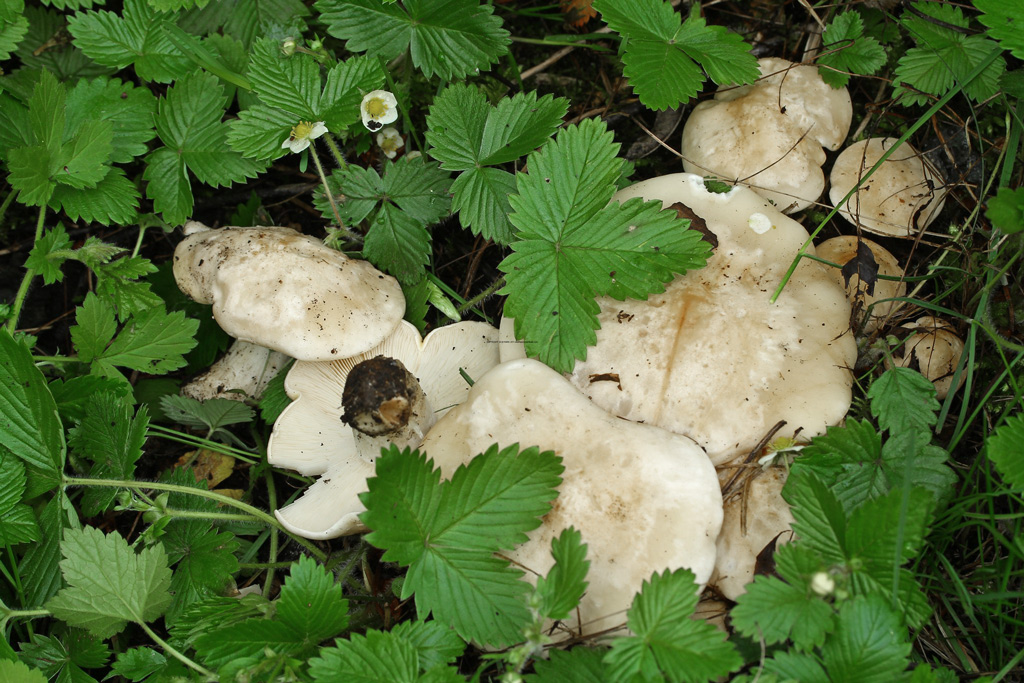
Perrechico (Calocybe gambosa)
The St. George's mushroom, or perretxiko, is a spring species associated with limestone meadows. Although harvested when very small, adult specimens can measure more than 15 cm, with whitish tones turning cream when mature.
Its very tight gills and characteristic floury aroma are its distinguishing features. It is a very typical species in Basque cuisine, with people paying crazy prices for the first specimens of the season.
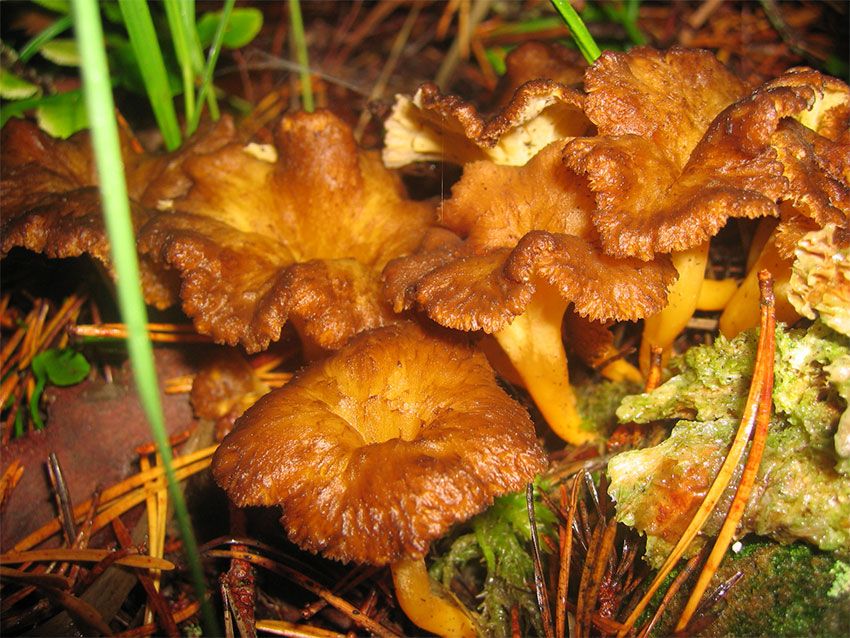
Angula de campo (Cantharellus lutescens)
Also known as camagroc, tube chanterelle, yellow trumpet, . . . This is a very common mushroom that grows abundantly in mixed forests. It is shaped like a small trumpet, grayish-orange in color, with gills that form folds extending to the base of the stem, which is a very bright orange-yellow color. These mushrooms have a fragile flesh and a sweet, fruity aroma, and are used in dessert recipes.
Morel (Morchella esculenta)
It is also known as morel, morel, morel, etc. It is a spring mushroom that likes to grow in moist, plant-rich soil. Its shape is one of the most characteristic of the fungal kingdom, with its globular cap formed by small cells or alveoli.
It is grayish brown in color and can measure between 3 and 12 cm in diameter. It is a toxic species if eaten raw, which is why it is only sold in dried form. This is a highly prized mushroom species in cooking, especially in countries such as France. 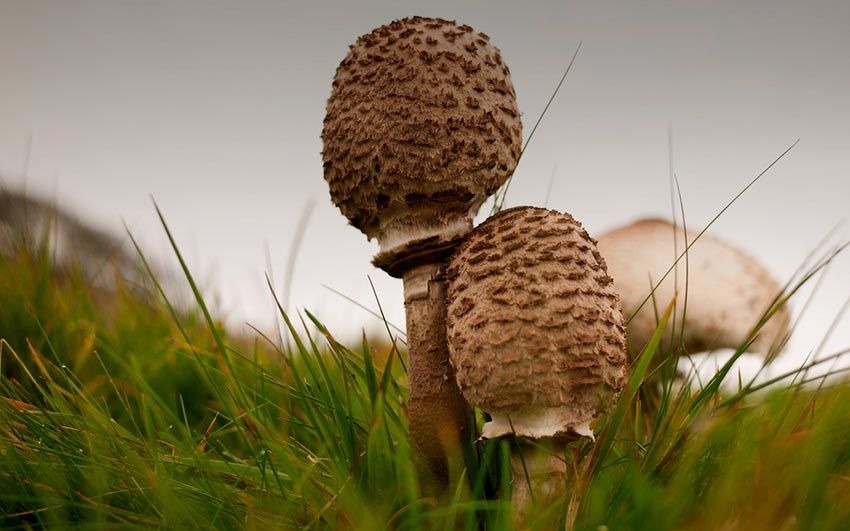
Parasol (Macrolepiota procera)
This large mushroom is also known as apagallums, apagador, or galamperna. It can be found in clearings and forest edges, pastures, and meadows. It can grow to over 40 cm in height, and its cap can reach over 30 cm in diameter.
A characteristic feature of this species are the brown scales that cover the cap and, above all, its double ring, which is completely mobile along the stem. The stem is also very long, hollow, and usually has brown tiger-like spots.
Both its smell and flavor are very pleasant, with a somewhat elastic and tender flesh texture. It is important not to confuse them with other highly toxic species of lepiota, so we should avoid picking specimens less than 15 cm high.
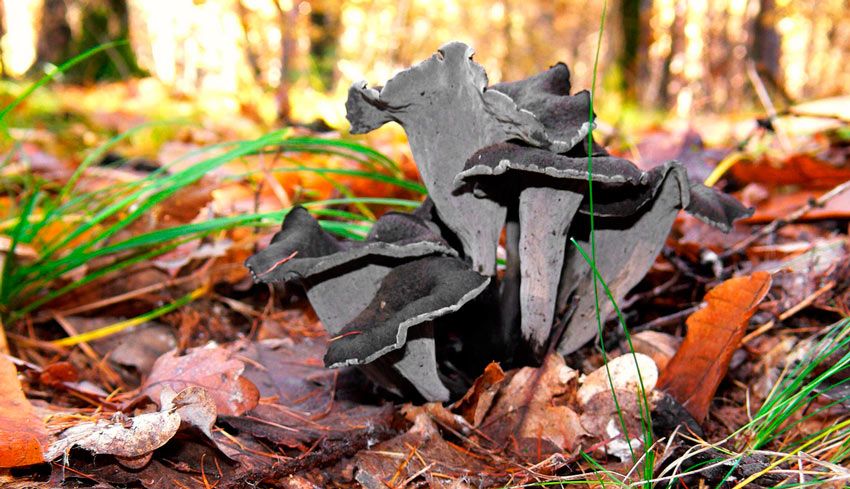
Black trumpet mushroom (Craterellus cornucopioides)
It is known by many names: cornucopia, black trumpet, death trumpet... despite which, it is one of the best edible mushrooms we can find. It is grayish-black in color, funnel-shaped, and hollow from the cap to the stem. It is found in oak or beech forests and has an intense aroma of truffles and spices, which is why it is highly sought after in professional cuisine.
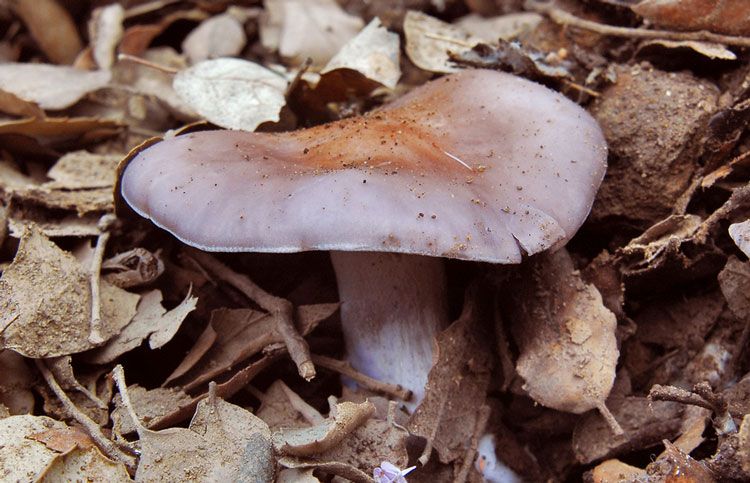
Blue foot (Lepista nuda)
Its most common name is Nazarena, due to its purple color. In the Basque Country, it is called gibel urdin, and in Catalonia, pimpinella violeta. It is found in almost all types of forests, including gardens and parks.
It can be identified by its purplish-brown color and fruity taste. Its cap changes from concave to convex as it matures. Its cultivation has developed considerably, and it can now be found in many supermarkets.
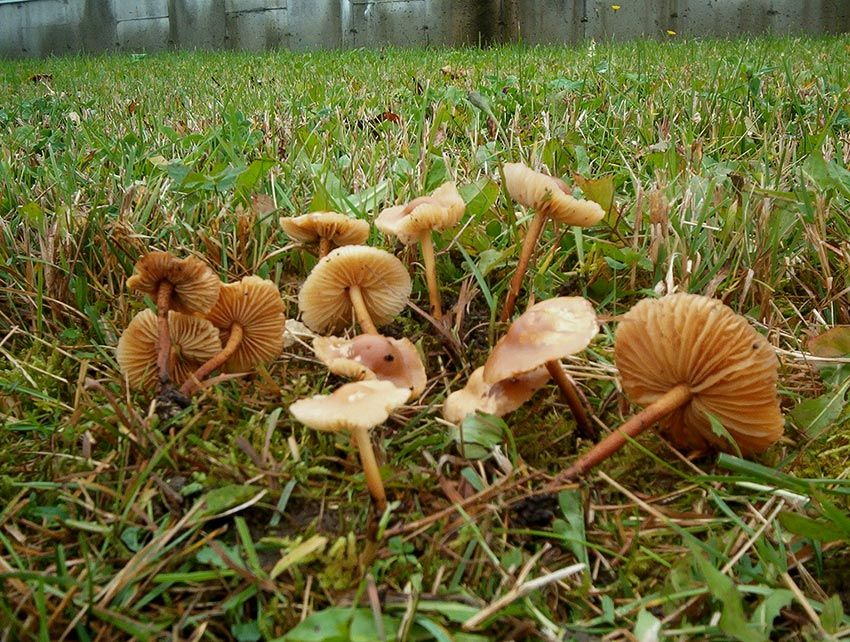
Senderuela (Marasmius oreades)
Its peculiar way of growing in meadows and pastures, forming circles or rows, makes it magical and special. That is why it is known as nymph, camasec, senderuela, carrereta, etc. It is a fairly small and slender species, cream-brown in color, both the cap and the gills and stem, and with a bell-shaped cap.
It is distinguished by the elasticity of its stem, which can be twisted without breaking. Its aroma and flavor are special, sweet and fragrant.
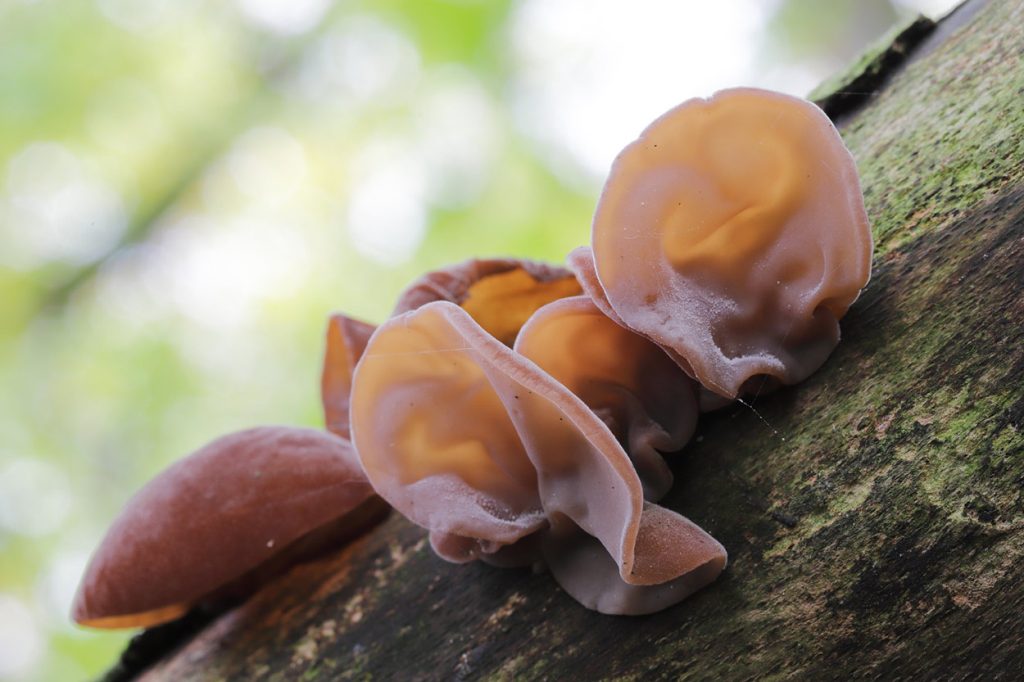
Judas' ear (Auricularia auricula-judae)
It can be found growing constantly on tree trunks and branches. Traditionally, it has been associated with elder trees, where Judas is said to have hanged himself, hence its characteristic name.
On the peninsula, it is associated with cork oaks and other flat-leaved trees. It can be found in damp places, on dead branches, mainly in autumn, but also in rainy springs. It is shaped like an irregular ear, shiny and reddish-brown in color. Its flesh is elastic and gelatinous. It is easy to preserve by drying and is highly prized in Asian cuisine.
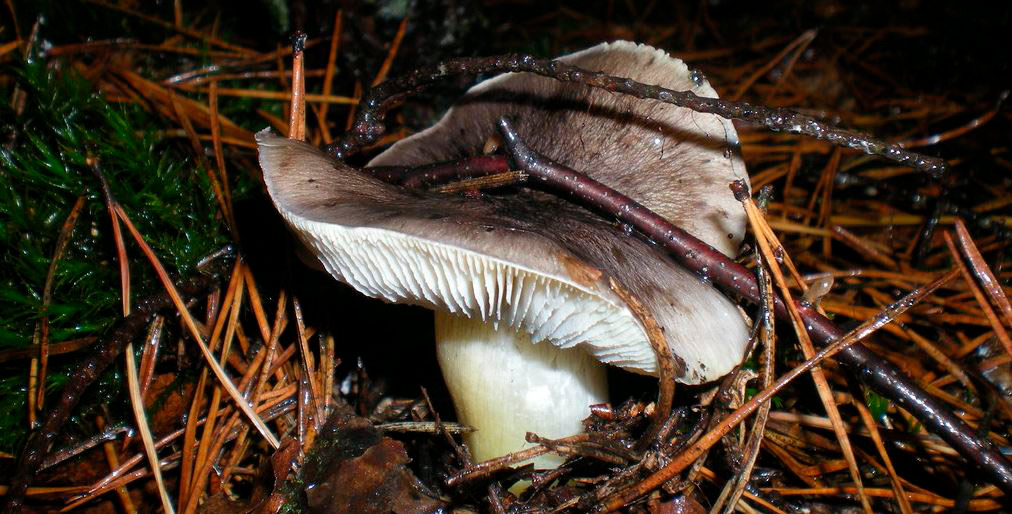
Tricholoma portentosum, charcoal burner's mushroom
The pretentious tricholoma, also known as the “charcoal burner's mushroom,” is an edible mushroom species highly prized in cooking for its delicious flavor and texture. It is characterized by its convex, dark ochre cap and its sturdy, white stem with golden highlights. This mushroom is usually found in coniferous and deciduous forests during the fall and even winter.
You would surely add a few other mushroom varieties to this list. We have tried to include those we consider to be the most popular in cooking, although there are many others. Send us your list by email to info@lacasadelassetas. com and we will add them to this article in future revisions.
Cheers and happy mushroom hunting!

Te pueden interesar